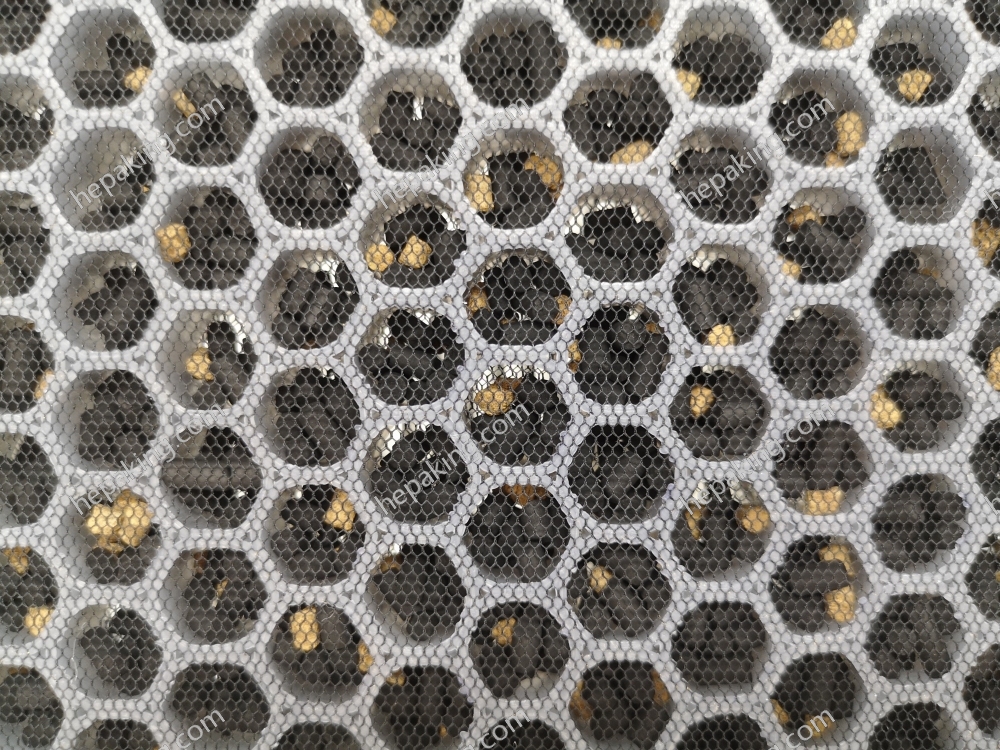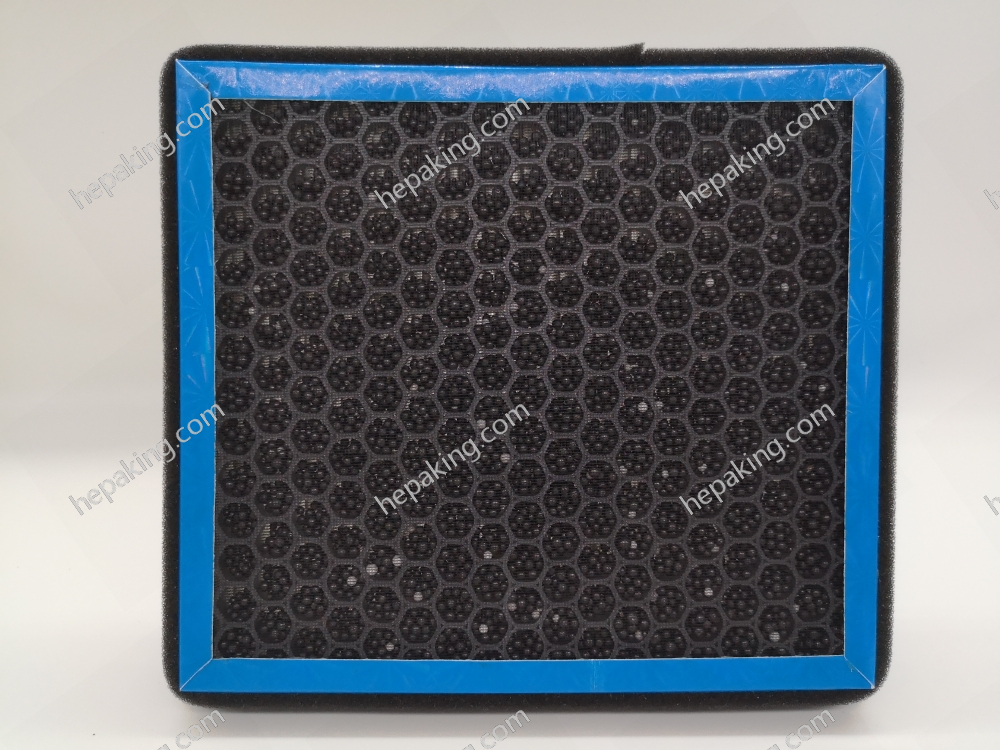Knowledge King
The difference between the normal version and the enhanced version of our cabin car air filter

The picture above is our HEPA King honeycomb activated carbon filter. The substance that black is activated carbon and the yellow object is the molecular sieve.

The picture above is our HEPA King honeycomb activated carbon filter. The substance that black is activated carbon and the yellow object is the molecular sieve. Both activated carbon and molecular sieves have adsorption capability.
The molecular sieve not only has the adsorption capacity, but the "sieving function" is more important in chemical research. Molecular sieves are relatively stable because of the relatively stable silicon structure. When molecular sieves are used as catalysts, they are responsible for screening qualified molecules with a porous structure. If the substances are too large, they will be "tapped" and cannot pass through the porous structure.
At present, ZSM-5 is regarded as the most famous molecular sieve for catalysis, and SAPO-18 and SAPO-34 molecular sieves are the most cutting-edge research and improvement directions in the field of catalysis at this stage.
Nanocrystals are mainly particles made of porous mineral crystals such as pure natural mineral soil and activated carbon powder. Mineral soils include sepiolite, tourmaline, attapulgite, bentonite, etc., are improved activated carbon. The pore size of the internal pores is between 0.27-0.98 nanometers, which are arranged in crystals, so it is called "nanocrystals'' for short. It is mainly used to adsorb harmful molecules and polar macromolecules in the air.
Nano mineral crystals have certain limitations in the adsorption of harmful gases. Therefore, when choosing, you can choose according to your own needs. Activated carbon and nano mineral crystals both have their advantages and disadvantages for air adsorption. Activated carbon is easy to adsorb saturation, but it removes formaldehyde more comprehensively. Nano-mineral crystals are cheaper than activated carbon, so they are usually used as a substitute for activated carbon.

